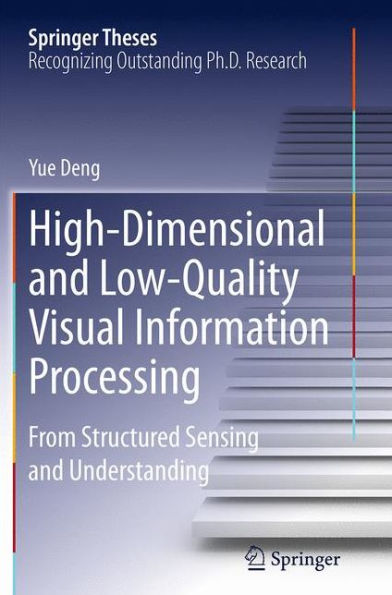This thesis primarily focuses on how to carry out intelligent sensing and understand the high-dimensional and low-quality visual information. After exploring the inherent structures of the visual data, it proposes a number of computational models covering an extensive range of mathematical topics, including compressive sensing, graph theory, probabilistic learning and information theory. These computational models are also applied to address a number of real-world problems including biometric recognition, stereo signal reconstruction, natural scene parsing, and SAR image processing.
1119994206
High-Dimensional and Low-Quality Visual Information Processing: From Structured Sensing and Understanding
This thesis primarily focuses on how to carry out intelligent sensing and understand the high-dimensional and low-quality visual information. After exploring the inherent structures of the visual data, it proposes a number of computational models covering an extensive range of mathematical topics, including compressive sensing, graph theory, probabilistic learning and information theory. These computational models are also applied to address a number of real-world problems including biometric recognition, stereo signal reconstruction, natural scene parsing, and SAR image processing.
54.99
In Stock
5
1

High-Dimensional and Low-Quality Visual Information Processing: From Structured Sensing and Understanding
99
High-Dimensional and Low-Quality Visual Information Processing: From Structured Sensing and Understanding
99Paperback(Softcover reprint of the original 1st ed. 2015)
$54.99
54.99
In Stock

Product Details
| ISBN-13: | 9783662525630 |
|---|---|
| Publisher: | Springer Berlin Heidelberg |
| Publication date: | 09/19/2015 |
| Series: | Springer Theses |
| Edition description: | Softcover reprint of the original 1st ed. 2015 |
| Pages: | 99 |
| Product dimensions: | 6.10(w) x 9.25(h) x 0.01(d) |
About the Author
From the B&N Reads Blog
